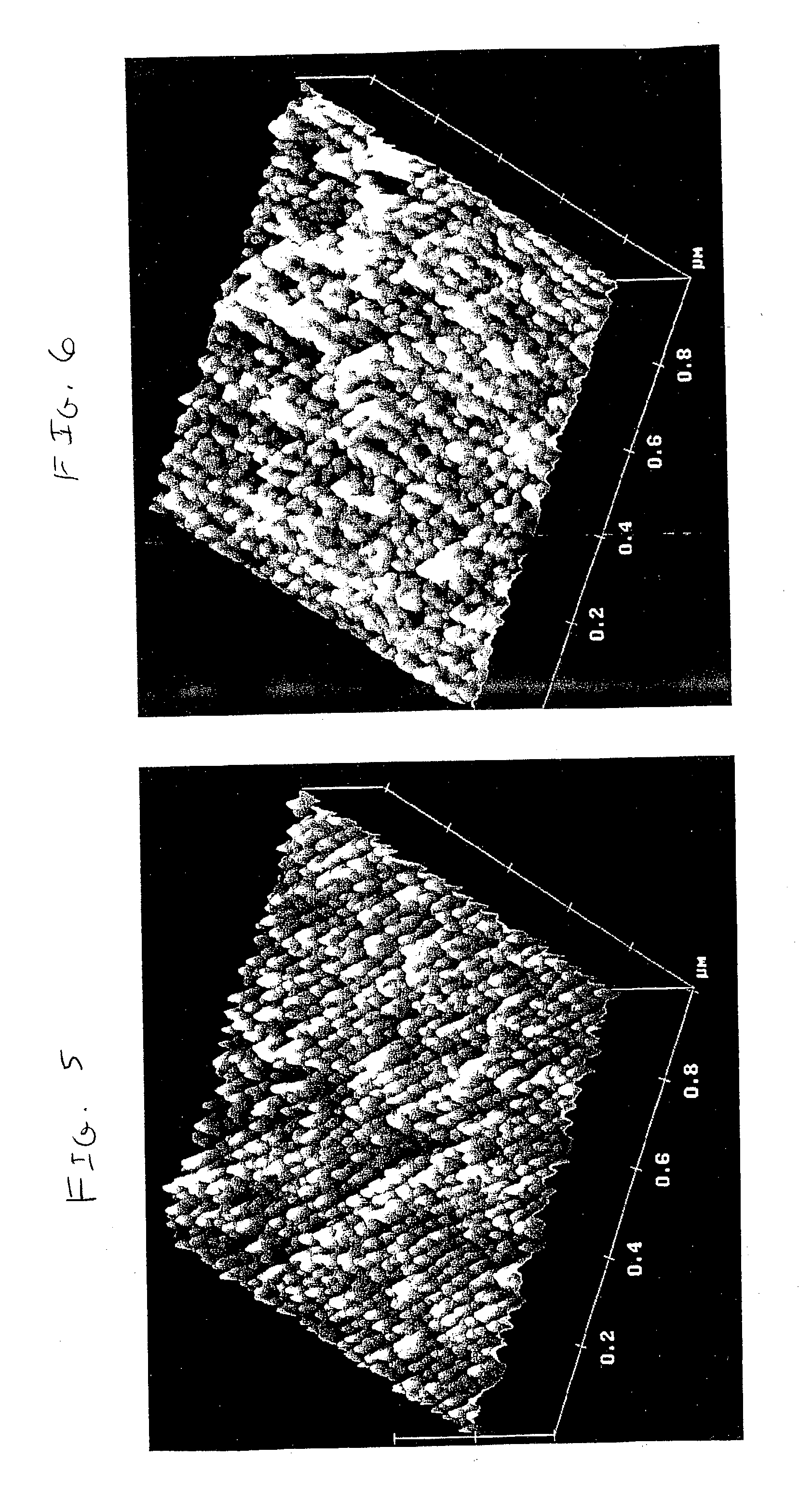Replication of nanoperiodic surface structures
a surface structure and nano-periodic technology, applied in the field of replication techniques, can solve the problems of difficult to produce dimensions on a length-scale of less than 100 nm using these techniques, and the significant amount of instrumental evolution that needs to take pla
- Summary
- Abstract
- Description
- Claims
- Application Information
AI Technical Summary
Problems solved by technology
Method used
Image
Examples
Embodiment Construction
[0016] With reference to FIGS. 1-4, the steps carried out in the preferred embodiment of the replication technique are as follows. First, as shown in FIG. 1, a template substrate 10 is provided having a two-dimensionally periodic structure 12 formed on a top surface 14 thereof. The structure 12 is formed of a plurality of protrusions 16 referred to as nanobumps, each of which has a height of approximately 3-5 nanometers and is spaced from adjacent nanobumps by a distance of between 1.5 and 50 nanometers. Preferably, the template 10 is a silicon structure that has been formed using the twist grain boundary technique disclosed in the previously discussed U.S. Pat. No. 6,329,070, which is hereby incorporated by reference. An AFM image of such a structure is shown in FIG. 5. However, it will be understood that the template 10 could be formed of any other suitable material and by any technique that is capable of forming such structures.
[0017] Next, as illustrated in FIG. 2, a thin film 1...
PUM
| Property | Measurement | Unit |
|---|---|---|
| thickness | aaaaa | aaaaa |
| thickness | aaaaa | aaaaa |
| size | aaaaa | aaaaa |
Abstract
Description
Claims
Application Information
 Login to View More
Login to View More - R&D
- Intellectual Property
- Life Sciences
- Materials
- Tech Scout
- Unparalleled Data Quality
- Higher Quality Content
- 60% Fewer Hallucinations
Browse by: Latest US Patents, China's latest patents, Technical Efficacy Thesaurus, Application Domain, Technology Topic, Popular Technical Reports.
© 2025 PatSnap. All rights reserved.Legal|Privacy policy|Modern Slavery Act Transparency Statement|Sitemap|About US| Contact US: help@patsnap.com



